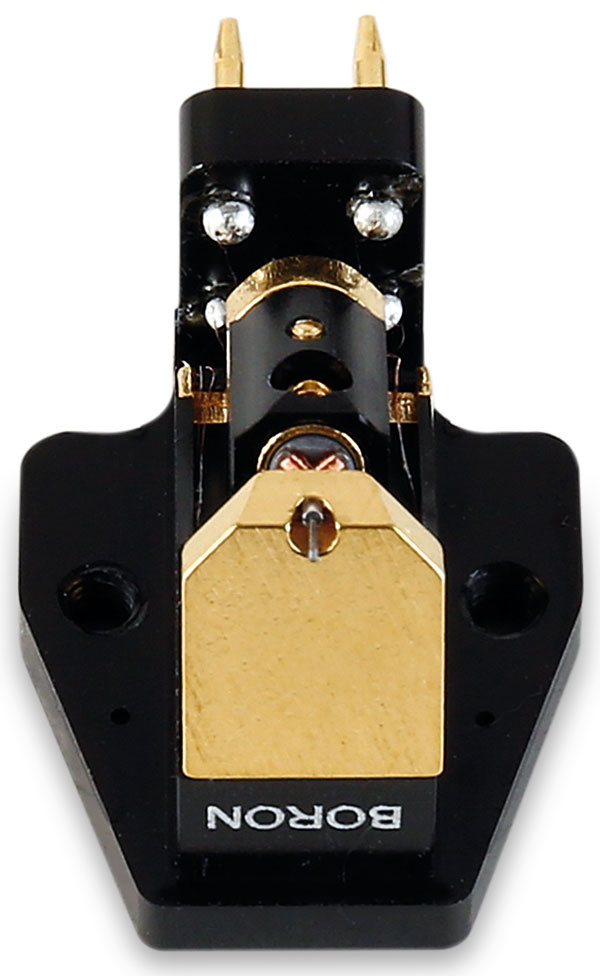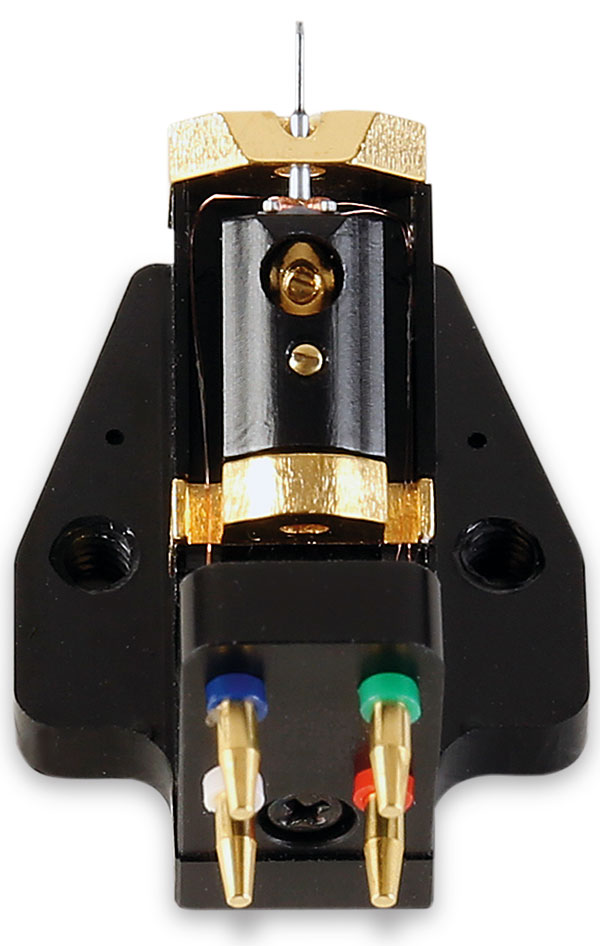AVID Boron Cartridge Page 2
This was, for whatever reason, particularly noticeable on LaVern Baker Sings Bessie Smith [Speakers Corner/Atlantic 1281] rather than on the other LPs I used for the sessions, but not so much that I was reaching for the balance control. As an experiment, I tweaked the anti-skating, which improved matters slightly, but we are talking minute amounts. Believe me: I am not interested in exacerbating the paranoia that is innate to many audiophiles.

Leaving such concerns to the sort who set up cartridges with laser pointers and microscopes, the rest was blissful. I knew Baker's voice intimately from years of adoring her, but this new pressing and the jazzy-interpretations-of-blues-classics showcased her voice with the warmth cranked up a few degrees. This immediately slapped me upside the head, reminding me that I was to compare this to the Reference Ruby and the known differences in the nature of the cantilevers.
Was it the record or the cartridge? The space, the snap, the warmth – they recalled the Reference Ruby, but with less aggressively forensic exposure. Nothing was lost – it was simply presented in a less dogmatic, less forceful way. Because I had my doubts about expressing these differences so emphatically without using like-with-like, I dug out all of the LPs I played when auditioning the Reference Ruby pick-up and stayed with the cartridge feeding the EAT E-Glo phono stage, which I had set to just over 100ohm.
With notes to hand, I even repeated the Ruby listening sessions' playing order. Why? Because music determines moods and I wanted to ensure that the conditions were identical. Again, commencing with the new LP of Gene Clark's No Other from the extensive box set [4AD 0071 MXX], I once more heard a rich and glorious midband, but with an even silkier top-end than the Ruby's, which has its own delicious sheen.
Gut Instinct
As bizarre as this might seem, the disparity reminded me less of cantilever variances than the sound of different valves. If you are a tube-ophile, you will appreciate what I mean when I say the Boron sounded like a KT77 while the Ruby resembled a KT88. Subtle, obscure, minuscule, perhaps, but it was repeatable with every song, especially the gripping title track. What bothers me is the impression I might be creating, that Boron versus Ruby describes some vast sonic chasm. This is not the case. I am labouring to describe such minute differences with precision so as not to suggest a situation that characterises the two cartridges as mutually exclusive, which I also said about the titanium-bodied TechDAS TDC01 Ti [HFN Sep '14] when I compared it to the Ruby.
They most certainly are not either/or, so you mustn't expect a quick A/B listening session to make up your mind for you. But seasoned listeners and experienced audiophiles – who else spends this kind of money on a cartridge? – will surely hear these variances through a controlled demonstration.
The trick will be hearing them through a neutral system which favours neither. My gut instinct tells me that one should audition the two through full-range electrostatic loudspeakers, driven by solid-state amps of an ice-cold mien.
Rock Solid
While I was dazzled by the atmosphere of menace that the AVID Ruby conveyed, the Boron nearly managed the same but with a teensy reduction in absolute stage depth. I'm in no position to confirm this was an artefact of cantilever behaviour, but it was certainly detectable. That said, the Boron's stage width and three-dimensionality perfectly matched that of the Ruby, despite the latter being a touch more open-sounding.

What proved useful about the mono pressing of The Remains' eponymous debut [Epic LN24214] was another go at experiencing PM's observation about the slight channel discrepancies, which had little effect on the precisely centralised location of the music. Perhaps I am imagining this but – and this is without recourse to using the mono button on my preamp, which I employ when listening to mono LPs – the Boron actually seemed to create a more rock-solid centre image.
That actually added to the belief that the Boron and the Ruby can co-exist peacefully in the same catalogue (again, price notwithstanding) with more than just the top-end attack and absolute precision being their main differences. Rather, I also noted with all of the recordings that the bass was drier with the Ruby, and less forceful with the Boron. Again, it was The Remains' power track, 'Don't Look Back', with its manic percussion, that allowed me to appreciate how the two differ.
To put this into practical terms, I'd imagine the Boron would benefit those loudspeakers with ultra-tight, snappy bottom octaves, while the Ruby shines through 'bottomless-pit'-type speakers, eg, those with lots of woofers with tuned ports. With either AVID moving-coil, the bass is deep enough to satisfy a hip-hop devotee or those who listen to Kodo drums for pleasure.
Hi-Fi News Verdict
Boron versus Reference Ruby addresses a sonic trait that's not qualitative, so scoring is identical. This exceptional cartridge is differentiated from the Ruby by being more ear-friendly and less critical of the rest of the system. In some set-ups, then, the Ruby's arch precision, attack and speed will be preferred and exploited. For a more relaxed experience, though, the Boron is the ticket. And you saved £2000...
























































